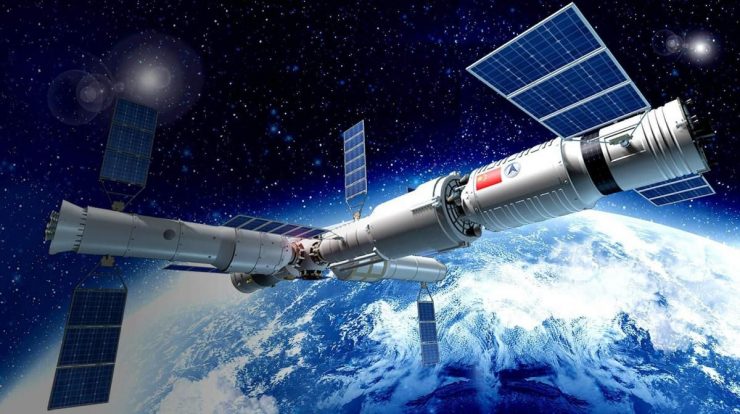
On June 16 last, a Tiangong-3 welcomed its first astronauts, which will remain aboard the Tianhe unit for three months. During that time, Chinese astronauts will conduct scientific experiments, take trips into space, and make preparations for incoming missions from the Chinese Space Agency.
Tiangong-3 is the successor to the previous Chinese laboratories – Tiangong-1 and Tiangong-2 – and like the International Space Station (ISS), it will be modular. This means that there will be new versions of the following modules that will be paired with Tianhe, which is the central module. The total weight of all “parts” will be about 70 tons.
In the same way that we can from time to time see the International Space Station pass through the night sky, it is also possible to observe Tiangong 3 in Earth’s orbit. The Tianhe module is one-fifth the size of the International Space Station, but it can be seen with the naked eye, as long as the weather and lighting conditions are appropriate. In other words, you’d need clear skies in a place free from urban light pollution to be able to see anything. Of course, you will have to know when and where to look – but for that, there are already online tools that make the task easier.
How to find the Chinese space station Tiangong-3
To see where Tiangong-3 is in the sky in real time, just visit n2yo.comIt is a very useful site for monitoring and controlling satellites in general, including the International Space Station and the new Chinese station. Of course, the Tianhe-1 module will not be neglected, so you can directly access the Chinese terminal’s monitoring page and save it to your favorites. Therefore, when there are suitable conditions in your area, you can check whether the station will pass over your city.

On the screen, you will see a table with a series of information related to the orbit of the Chinese laboratory, such as perigee and apogee (nearest and farthest point it can be from Earth), rotation period (orbit completion time), among other data. On the side, the map will show Tianhe-1 moving in real time and a red line representing the last and future path.
In addition, the tool shows the forecast path for the next 10 days, which makes your monitoring plans more practical, since you will be able to compare this information with the weather forecast in your city and thus plan everything in advance. To get the Tiangong-3 route prediction, simply click on the “10 Days Forecast” option, located in the upper left side of the screen.
However, keep in mind that these predictions are based on the current path, and can change at any time. This is because the Chinese station, like the International Space Station, is constantly descending as it orbits the planet, and therefore needs to periodically adjust its position. When this happens, the orbital laboratory rises to higher altitudes and sometimes changes its course slightly.
The station completes a circle around the planet every 91 minutes, so there are plenty of opportunities to see it in your city’s night sky. Of course, it will not pass through your area every day, and sometimes it may pass over you during the day, making observation useless. However, it is worth planning patiently, checking the data and, at the ideal time, observing the station as a little glow in the night sky.
Another tool tip is lightpollutionmap.info, indicating the areas with little light pollution closest to you. If you have enough photographic equipment, the experience can yield good photos.
Did you like this article?
Subscribe to your Canaltech email to receive daily updates with the latest news from the world of technology.
